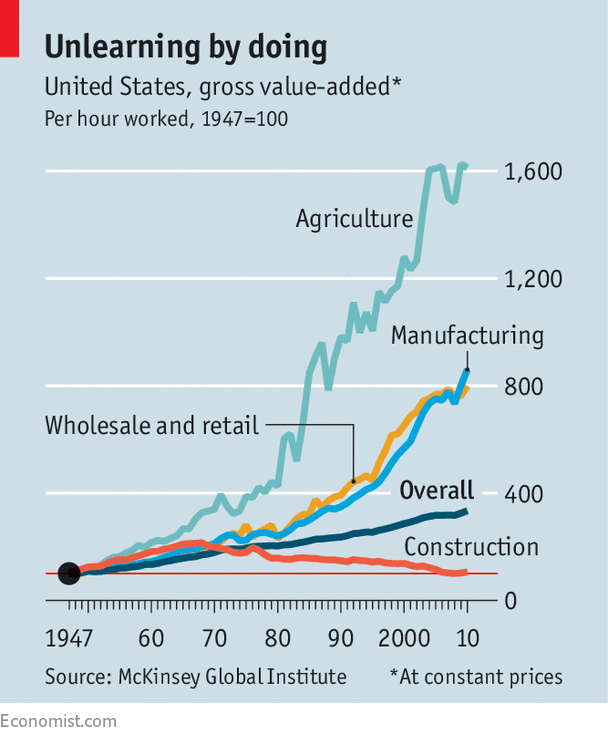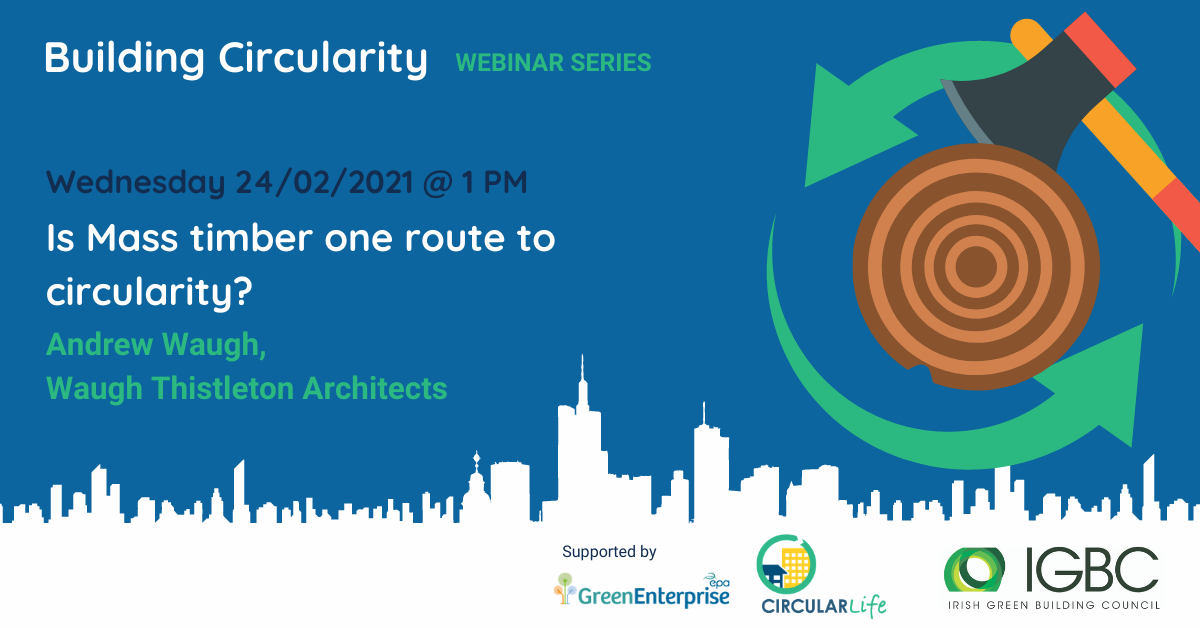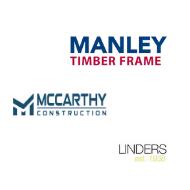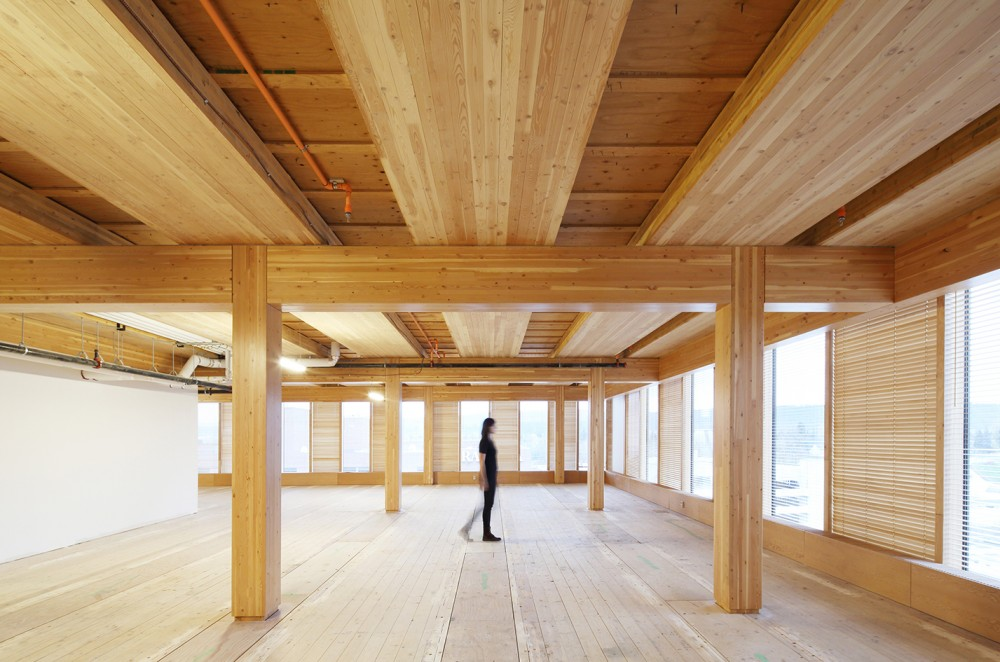
by Canice Clooney (Finsa)
The case for designing our built environment with timber has been made by many people more qualified than me when it comes to a sustainability standpoint; there can be no doubt that timber is one of the few truly sustainable building materials. So, is sustainability the only advantage timber has? Are there arguments that we can make about the virtues of timber design that go beyond the need to use building materials which provide a carbon sink, rather than a carbon source? How about productivity?
The construction industry is an outlier when it comes to productivity. Since 1947, every other major industry has seen advances in productivity while construction has stagnated, indeed since the 1960’s productivity in construction has halved. (Efficiency eludes the construction industry, 2017) In the construction industry cost overruns & delays which would be unacceptable in other industries are commonplace.
While the design & planning of construction projects has gone digital & has seen advances in productivity as a result, the work on site has barely changed since the 1960’s. During a typical workday, a site worker will spend 30% of their day actually constructing, with the remaining 70% of time spent on planning (gathering materials & tools) or even waiting to be allowed to construct. (Is Construction Stuck In The 1960s, n.d.)
There is a growing option which supports sustainability and efficiency, Offsite construction. When compared to traditional construction methods, where delays on site, due to weather, lack of materials or lack of skilled trades people can result in low productivity, Offsite Construction is completed in a controlled environment, with high levels of safety, less disruption to the public, with a lower requirement for skilled labour & with much higher sustainability. Timber is uniquely suited to offsite construction methods.
Designing our construction projects with timber also has a part to play in increasing productivity once the construction project is completed. Biophilic Design– the concept of increasing occupant connectivity with the natural environment through the use of direct & indirect nature, along with space & place conditions, has seen an increase in importance in recent years. Biophilic Design delivers tangible benefits to people, the planet & also to productivity, by using our innate attraction to nature to improve the spaces we live & work in.
It has been estimated that we now spend up to 90% of our lives indoors (Delos, 2019)
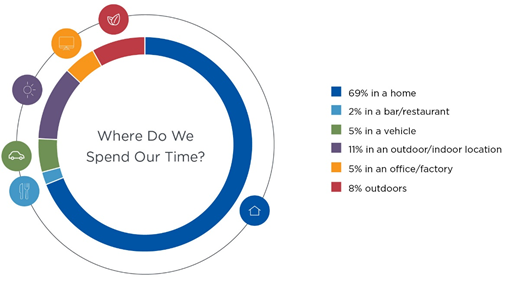
With this being the case, shouldn’t we create living & work environments that allow us to strengthen the human connection with nature? At the recent online conference, The New European Bauhaus: How can the wood sector engage, contribute & co-create? (The New European Bauhaus, 2021`), Oliver Heath’s (https://www.oliverheath.com/) presentation on Biophilic Design showed the following:
Benefits of Timber use
Physiological & psychological benefits of timber use on wall, floor or ceiling surfaces demonstrate:
- Reduced blood pressure, heart rates & stress
- Improved pain perception & lower pain recovery time
- Improved attention, focus, emotional state & creativity
- Increased environmental satisfaction
- In fact: Use of real timber beds can reduce heart rates by 3500 beats per day
Biophilic Benefits
There is scientific evidence that the addition of Biophilic elements including plants & timber in the workspaces has been found to improve:
- Energy levels by 76%
- Self-reported happiness by 78%
- Self-reported health by 65%
- Productivity by 6 to 15%
- Reduction in absenteeism by 15%
So, what if there was a way in which we could combine an increase in productivity on construction sites, while also enhancing the built environment for the occupants & also helping to save our planet? Well, it turns out there is a way which combines all three benefits- Cross Laminated Timber.
First developed in the 1990’s, Cross Laminated Timber is a relatively new construction material, but the benefits of constructing with CLT are already very apparent.
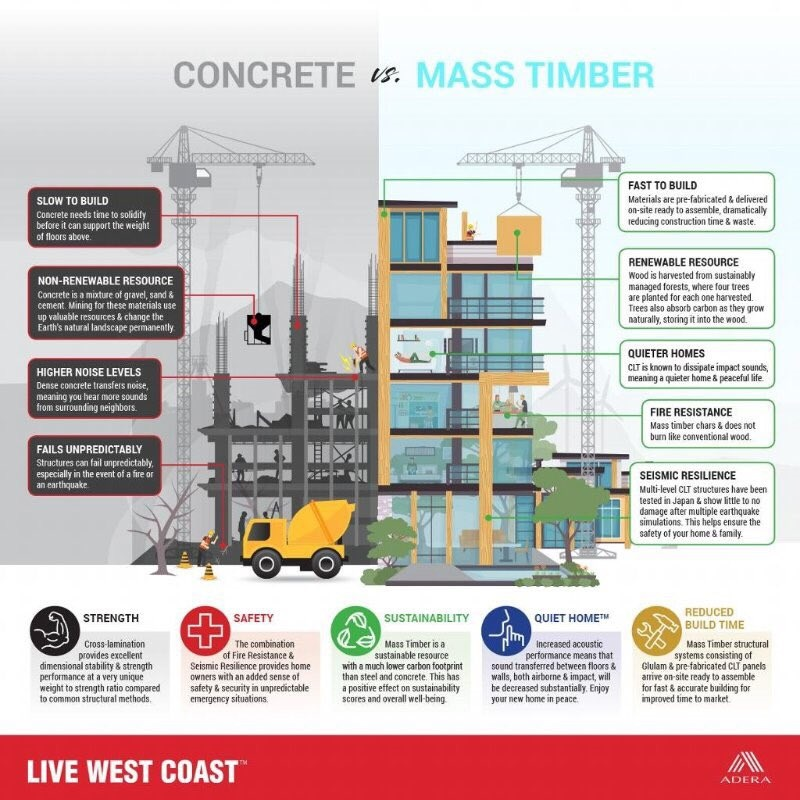
Constructing with CLT results in a building constructed to millimetre perfection in a controlled environment, without the delays & cost overruns associated with traditional construction methods, while also ensuring an enhanced environment for occupants.
In short, CLT offers not only an increase in productivity during the construction phase, but also multiple benefits for the occupants throughout the building’s lifespan, & the building also serves as a carbon sink, rather than a carbon source.
Cross Laminated Timber- increasing sustainability & productivity in our built environment.
Sources:
- https://www.economist.com/business/2017/08/17/efficiency-eludes-the-construction-industry
- https://www.fieldwire.com/blog/is-construction-stuck-in-the-1960s/
- https://delos.com.au/approximately-90-of-our-time-is-now-spent-indoors-heres-how-to-make-your-home-a-healthier-place-to-be/
- https://wood4bauhaus.eu/
- https://www.woodworkingnetwork.com/wood/panel-supply/how-cross-laminated-timber-buildings-are-built
Heads up from IGBC:
Do you want to know more about this topic? Watch our webinar on Mass Timber and Circularity by Andrew Waugh (Waugh Thistleton Architects) here. (Free for members here!). Find more resources on Learning Hub, Resources & Circularity section.
Canice Clooney is technical sales manager & business development specialist with Finsa Ireland. With a BSc in Wood Science & Technology from University of Limerick & 15 years’ experience working as a carpenter in the Irish construction sector, Canice has a deep interest & understanding of the benefits of sustainable timber construction.
Since 1931, Finsa have been a pioneer of wood-based products on the Iberian Peninsula. Ever since its inception, Finsa has been aware of the responsibility it takes on by using sustainable wood as the base element to manufacture & develop solutions, which now continues with the incorporation of our Cross Laminated Timber production facility in north-western Spain (https://xilonor.es/#home)
